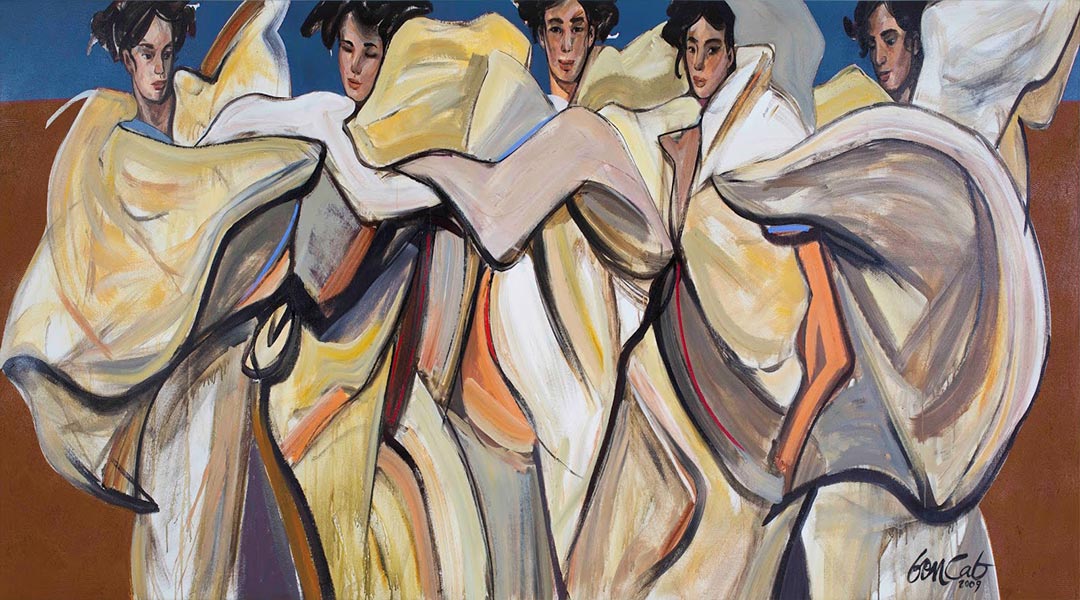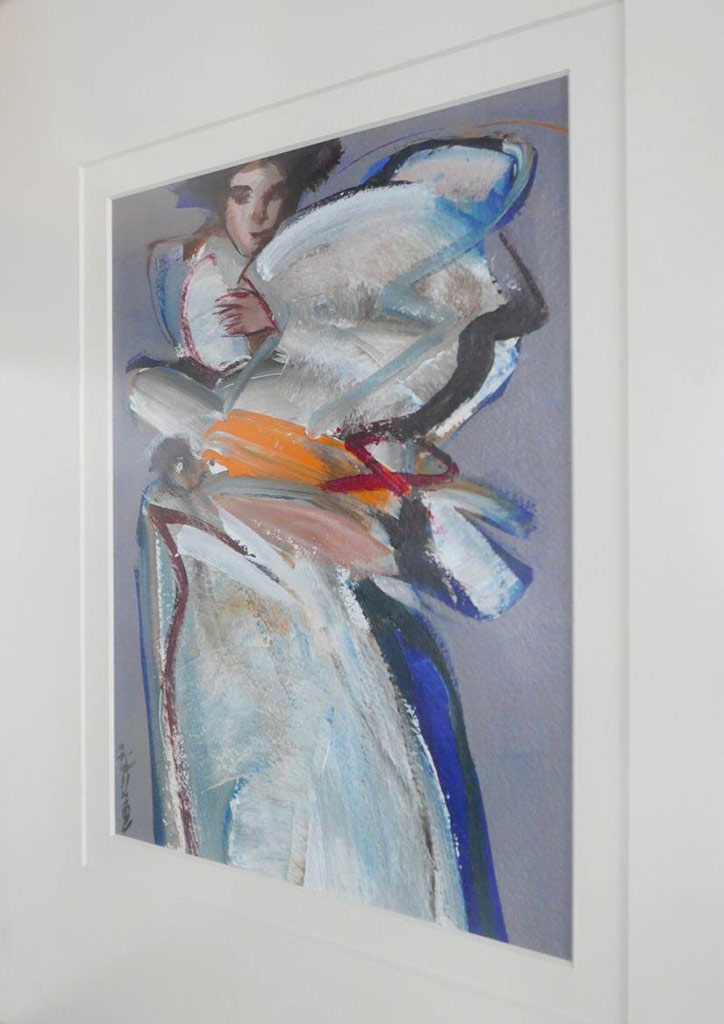Benedicto Cabrera, best known as BenCab, was born to Democrito Cabrera and Isabel Reyes in Malabon, Philippines on April 10, 1942. The youngest of nine children, he looked up to his older siblings. His first exposure to the arts was through his brother Salvador, already a well-established artist during BenCab’s younger years. He practiced drawing by copying American comic books. He won his first art award and a 100-peso-prize when he was a sixth-grade student for his entry to a poster contest with a human rights theme.
Photos courtesy of Design Anthology
Having studied at the University of the Philippines College of Fine Arts, he worked closely with another National Artist for Visual Arts, Professor Jose Joya, helping design and install stage sets. He graduated in 1963 and immediately began carving a niche for himself, through his abstract and realist figure paintings, in Manila’s art circles. At the same time, he joined Liwayway Magazine as an illustrator and was able to work with another renowned artist, Ang Kiukok. The following year, he started using BenCab as his name. This was also the year where he would discover his muse turned Icon – a scavenger named Sabel. “She is a symbol of dislocation, despair and isolation – the personification of human dignity threatened by circumstances,” he says. Since observing and sketching Sabel from his window in Bambang, Sabel has undergone innumerable transformations and continues to be a recurring subject in his current works.
Photos courtesy of Dennis Robles
In 1968, he was discovered by Arturo Luz and made him join an annual event at The Luz Gallery in Manila which showcases young talents. It was followed by the show that formally launched his remarkable career as an artist – an exhibit of 60 acrylic paintings of Sabel, workers, and scavengers as his subjects.
BenCab met British writer Caroline Kennedy, his soon-to-be wife, in Manila. Shortly after their wedding in 1969, They decided to settle down in London and had three children together. Eldest is Elisar, a filmmaker based in London. Mayumi, a model, and actress, currently living in Los Angeles, was born in Manila. The youngest Jasmine, who was born in 1977, is a London-based fashion stylist.
BenCab’s early years as an artist in London were not particularly easy. Still, his talents were immediately recognized as he held his first exhibition with Rocio Urquijo and Virgilio Aviado at the Sala Honda gallery in Cuenca, Spain. English actress Glenda Jackson bought eight of his paintings. She later invited him to exhibit at her husband’s gallery, Paintings & Drawings at the Room Gallery in London, his fourth solo show and his first outside the Philippines.

In response to the political abuses during Martial Law, He returned to Manila in 1972. He began to passionately create artworks that commented on social and political topics of oppression and freedom.
Immediately after, he had a homecoming exhibition in the Luz Gallery, which gave him critical acclaim and established him as a significant influence among his peers. In 1974 he moved back to London but continued to produce work with vital political commentary exhibited in various countries such as London, Colombia, Spain, Paris, and Scotland.
After his divorce from Caroline, BenCab returned to the Philippines in 1985 just in time to be a part of the EDSA people-power revolution. He established his studio on a small farm near Tuba, Benguet, because of the climate that reminds him of London. Since then, he has been actively exhibiting in various cities in Asia and Europe. He has also received many recognitions such as Gawad CCP Para sa Sining (Cultural Center of the Philippines Award for the Arts), Most Outstanding Kapampangan for Arts & Culture, SEAN Achievement Award for Visual & Performing Arts at the 5th ASEAN Achievement Awards in Jakarta, Outstanding Citizen of Baguio Award for Arts among others. In 2006, the Philippine government conferred him a National Artist for the Visual Arts, the country’s most prestigious cultural accolade.
Photos courtesy of Food Alphabet
He has moved to a larger studio and workshop in a quieter section of Baguio. In 2009, He established the BenCab Museum, which is run and managed by the BenCab Art Foundation, Inc. As they have stated on the museum’s website: “We are committed to the promotion of the arts, and the preservation, conservation, and protection of the environment, as well as the culture and traditions of the Cordilleras, as an expression of the artist’s gratitude to the country that nurtured and inspired an artistic career that continues to grow, mature and fascinate.”
The museum houses some of his important works and the growing collection of his various interests, such as primitive wooden sculptures and functional objects from the Cordillera region, Paintings, prints, and sculptures by emerging Filipino artists. The museum’s lower level has an oriental garden that showcases a bonsai collection, a hobby he learned during his London years.
As of late, he is still regarded as arguably the best-selling painter of his generation of Filipino artists. His goal for the museum is to house a collection that can be shared for generations to come. He says that as long as the museum visitors enjoy, get inspired by his works and the place he has put so much of his heart, his legacy has been well established.
Notes about the Contributor
Daniel Lampa
Art enthusiast and into Fashion, French Culture, Mid-century modern design and spends a lot of his time curating his home in Manila and LA. He lives with his 3 dogs, Coco, Yohji and Junya.












